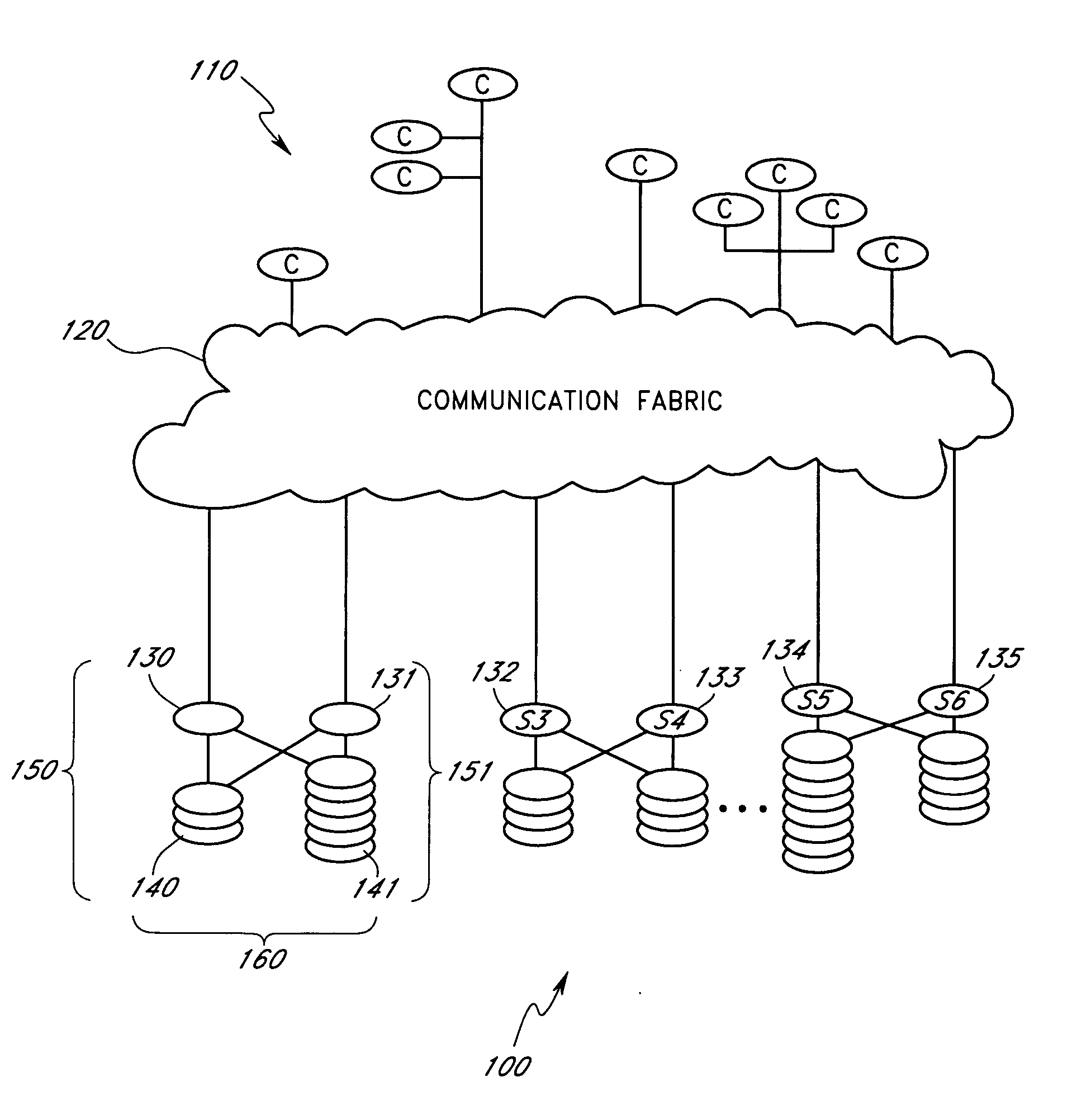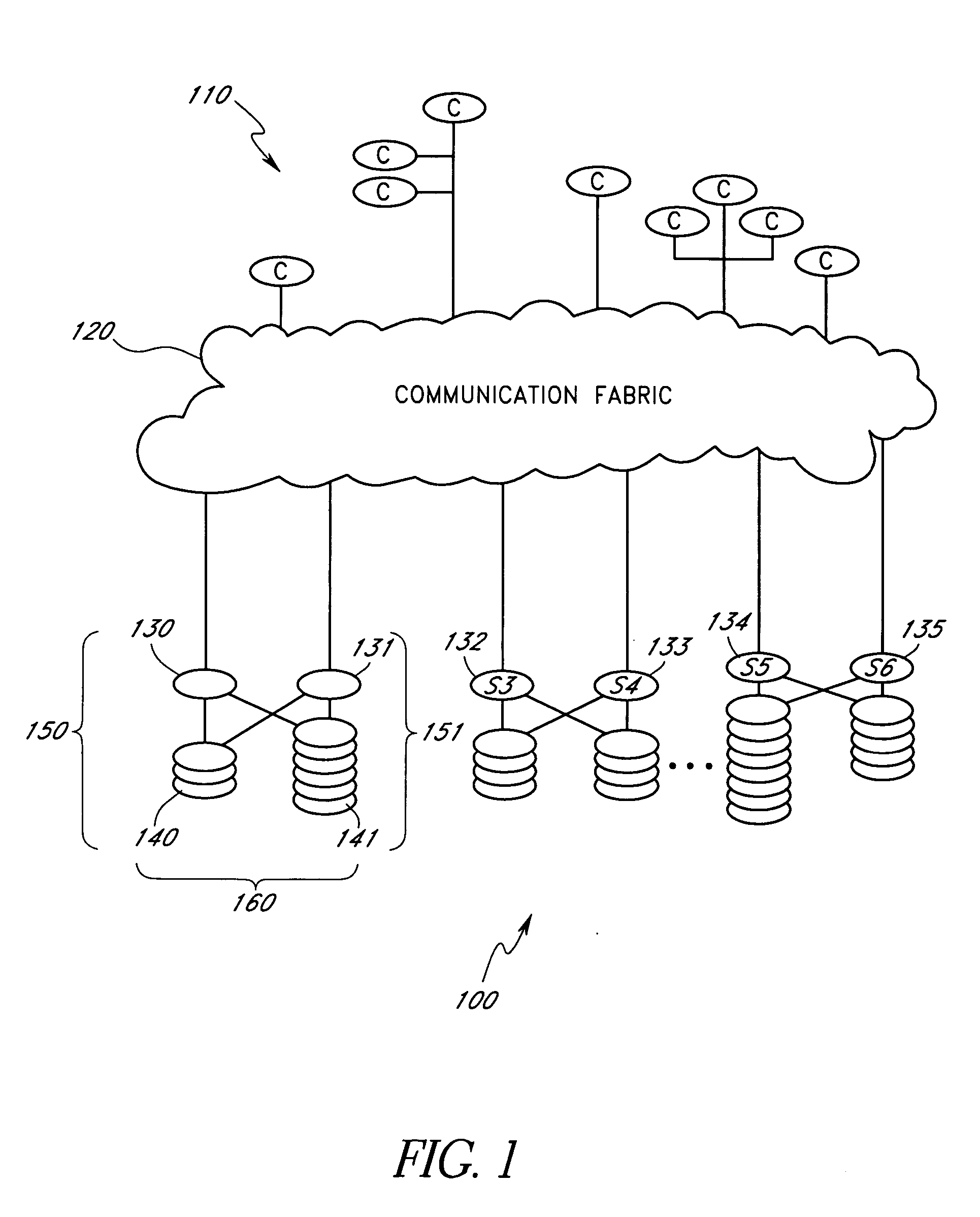Dynamic redistribution of parity groups
a parity group and dynamic technology, applied in the field of data storage and management, can solve the problems of substantial trade-offs between performance, reliability, flexibility, and inability to accommodate the conformity with existing system hardware, and achieve the effect of high capacity, throughput and reliability
- Summary
- Abstract
- Description
- Claims
- Application Information
AI Technical Summary
Benefits of technology
Problems solved by technology
Method used
Image
Examples
Embodiment Construction
Introduction
[0108] As data storage requirements increase, it is desirable to be able to easily increase the data storage capacity and / or performance of a data storage system. That is, it is desirable to be able to increase the available capacity and performance of a storage system without modifying the configuration of the clients accessing the system. For example, in a typical Personal Computer (PC) network environment, if a database accesses a network drive “M”, it is desirable to be able to add storage to this drive, all the while still calling the drive “M”, as opposed to adding, say, drives “N”, “O”, and “P” as storage requirements increase. In some cases, having to switch from a single drive “M” to four drives, “M”, “N”, “O”, “P” is a mere nuisance. However, in some cases such a change requires significant reconfiguration of client configurations. In other cases, such a change requires modification of existing application software, and in some instances such a change simply ...
PUM
 Login to View More
Login to View More Abstract
Description
Claims
Application Information
 Login to View More
Login to View More - R&D
- Intellectual Property
- Life Sciences
- Materials
- Tech Scout
- Unparalleled Data Quality
- Higher Quality Content
- 60% Fewer Hallucinations
Browse by: Latest US Patents, China's latest patents, Technical Efficacy Thesaurus, Application Domain, Technology Topic, Popular Technical Reports.
© 2025 PatSnap. All rights reserved.Legal|Privacy policy|Modern Slavery Act Transparency Statement|Sitemap|About US| Contact US: help@patsnap.com



